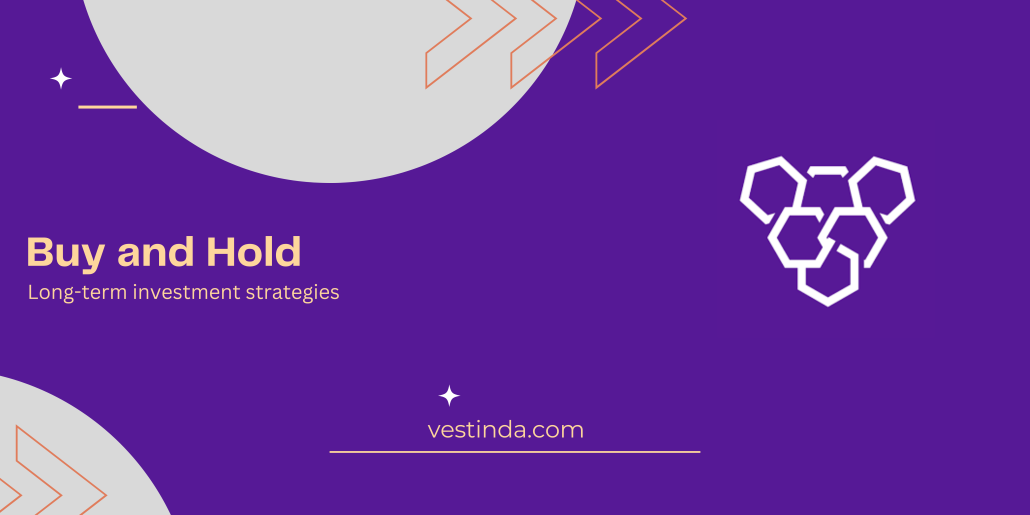Is Buy-and-Hold The Only Path? A Realistic Look At Long-Term Investing

Table of Contents
The Strengths of Buy-and-Hold Investing for Long-Term Growth
Buy-and-hold, at its core, involves purchasing assets (stocks, bonds, etc.) and holding them for an extended period, typically years or even decades, regardless of short-term market fluctuations. This strategy leverages several key advantages for long-term growth.
Minimizing Transaction Costs and Taxes
One significant benefit of buy-and-hold is its inherent tax efficiency. Frequent trading generates transaction costs (brokerage fees) and potentially higher tax liabilities (capital gains taxes). By minimizing trading activity, buy-and-hold significantly reduces these expenses.
- Reduced Brokerage Fees: Each trade incurs a fee. Frequent buying and selling dramatically increases these costs, eating into potential returns.
- Long-Term Capital Gains Tax Savings: Long-term capital gains (assets held for over one year) are typically taxed at a lower rate than short-term gains. Buy-and-hold maximizes the opportunity to benefit from these lower tax rates. This contributes to better long-term capital gains and overall tax efficiency.
Riding Out Market Volatility
Markets are inherently volatile. Buy-and-hold acknowledges this volatility and emphasizes patience. The strategy encourages investors to withstand short-term market downturns, understanding that historically, markets tend to recover and grow over the long term.
- Historical Market Performance: Data consistently shows that despite periodic corrections and bear markets, the stock market has historically delivered positive returns over the long run.
- Risk Tolerance: Buy-and-hold is best suited for investors with a higher risk tolerance and a longer time horizon. The ability to weather market storms is crucial for success with this approach. Understanding long-term market trends is key.
Power of Compounding
Perhaps the most compelling advantage of buy-and-hold is the power of compounding. Returns earned are reinvested, generating further returns on both the initial investment and accumulated profits. This creates exponential growth over time.
- Example 1: A 10% annual return on a $10,000 investment compounded over 20 years results in significantly more growth than a simple 10% annual return without reinvestment.
- Example 2: The longer the investment horizon, the more dramatically compounding impacts wealth building. This is a key element of successful long-term portfolio management.
Limitations and Potential Drawbacks of a Pure Buy-and-Hold Approach
While buy-and-hold offers compelling advantages, it's not without potential drawbacks. A purely rigid approach may not be optimal in all circumstances.
Missing Out on Market Opportunities
Sticking rigidly to buy-and-hold can mean missing out on potentially significant returns. Some sectors or individual stocks may outperform the broader market substantially.
- Sector Rotation: Certain sectors of the economy outperform others at different times. A buy-and-hold strategy may not capitalize on these shifts.
- Market Timing: While attempting to time the market perfectly is generally discouraged, strategically adjusting allocations based on compelling evidence can enhance returns. Active investing, although riskier, offers this possibility.
Responding to Major Economic Shifts
Unforeseen economic events – recessions, technological disruptions, geopolitical instability – can significantly impact different asset classes. A purely passive buy-and-hold approach may not adequately address these challenges.
- Economic Downturn: A severe recession might necessitate adjustments to portfolio allocation to mitigate losses and reposition for recovery.
- Portfolio Rebalancing: Regularly reviewing and rebalancing your portfolio in response to changing economic conditions is crucial for effective risk management.
The Risk of Holding Underperforming Assets
Holding onto underperforming assets for an extended period can lead to significant losses. Diversification and regular portfolio reviews are crucial for mitigating this risk.
- Portfolio Diversification: Spreading investments across different asset classes reduces the impact of any single investment underperforming.
- Investment Risk: Understanding and managing investment risk is paramount, regardless of the chosen strategy. Regular portfolio reviews allow for timely adjustments to reduce potential losses.
Alternative Long-Term Investing Strategies Beyond Buy-and-Hold
While buy-and-hold forms a solid foundation, exploring alternative approaches can enhance your long-term investment strategy.
Value Investing
Value investing focuses on identifying undervalued companies with strong fundamentals. This strategy, championed by investors like Benjamin Graham, seeks to profit from the market mispricing of such companies.
- Intrinsic Value: Value investors look for companies whose market price is significantly below their intrinsic value.
- Examples of Successful Value Investors: Warren Buffett's success is largely attributed to his value investing approach.
Dividend Growth Investing
This strategy concentrates on companies with a consistent history of increasing dividend payouts. It offers a combination of capital appreciation and regular income generation.
- Dividend Yield: Dividend yield is a key metric in dividend growth investing.
- Income Generation: Dividends provide a steady stream of income, which can be reinvested or used for other purposes.
Index Fund Investing and ETFs
Index funds and exchange-traded funds (ETFs) passively track a specific market index (e.g., S&P 500). They offer broad diversification and low expense ratios, making them attractive options for long-term growth.
- Passive Investing: Index funds are an example of passive investing, requiring minimal active management.
- Advantages of Passive Investing: Lower fees and generally good performance over the long term are major benefits.
Conclusion: Finding the Right Long-Term Investing Path for You
Buy-and-hold is a viable and effective long-term investing strategy, offering benefits such as tax efficiency and the power of compounding. However, it's not a one-size-fits-all solution. Other approaches, such as value investing, dividend growth investing, and index fund investing, offer alternative paths to long-term wealth creation. Understanding your investment goals, risk tolerance, and time horizon is crucial in determining the best investment strategy for you. Effective portfolio management involves tailoring your approach to your individual circumstances. Start researching different long-term investment strategies today to find the perfect path for your financial future. Don't limit yourself to just buy-and-hold; explore other options and build a diversified portfolio tailored to your needs. Remember that sound portfolio management is key to successful long-term investing.

Featured Posts
-
 Umfjoellun Um Fyrstu Rafutgafu Porsche Macan
May 25, 2025
Umfjoellun Um Fyrstu Rafutgafu Porsche Macan
May 25, 2025 -
 Kyle Walkers Wife Annie Kilner Seen Out And About After Husbands Night Out With Mystery Women
May 25, 2025
Kyle Walkers Wife Annie Kilner Seen Out And About After Husbands Night Out With Mystery Women
May 25, 2025 -
 Fanatik Gazetesi Atletico Madrid Barcelona Macini Canli Izleyin
May 25, 2025
Fanatik Gazetesi Atletico Madrid Barcelona Macini Canli Izleyin
May 25, 2025 -
 Worlds Largest Rubber Duck Promoting Water Safety In Myrtle Beach
May 25, 2025
Worlds Largest Rubber Duck Promoting Water Safety In Myrtle Beach
May 25, 2025 -
 Sergey Yurskiy 90 Let Pamyati Velikogo Aktera
May 25, 2025
Sergey Yurskiy 90 Let Pamyati Velikogo Aktera
May 25, 2025
